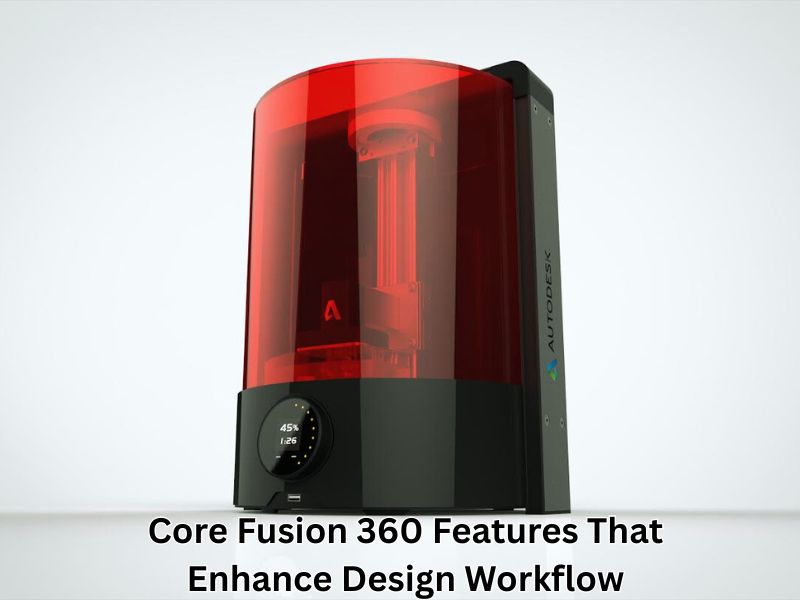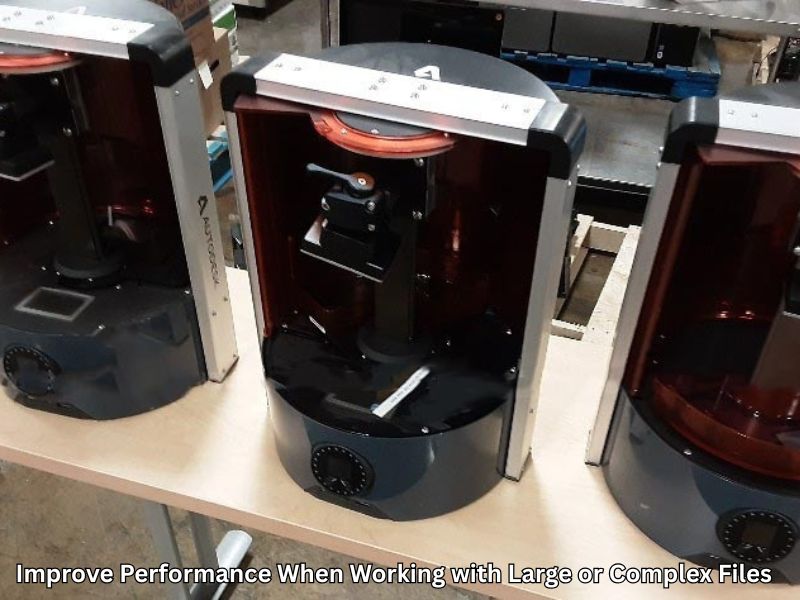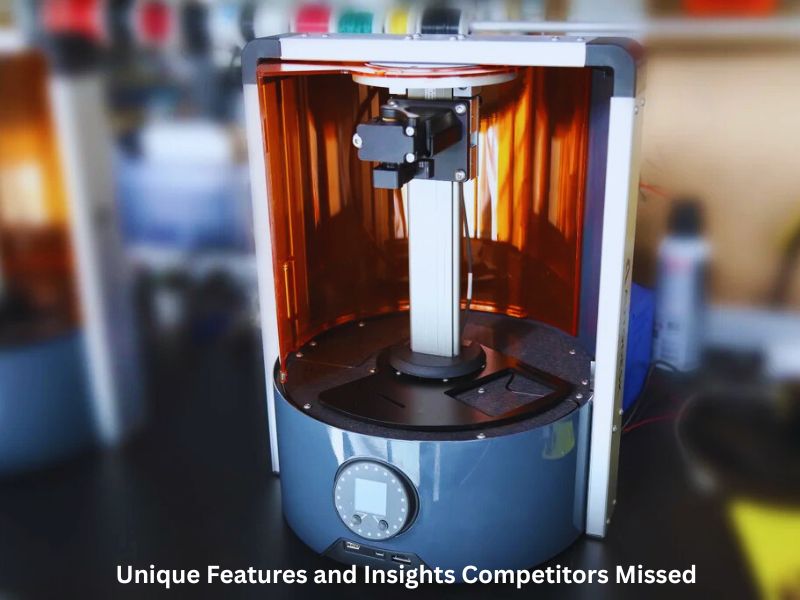Fusion 360 by Autodesk makes 3D design faster and easier. As someone who uses it daily for both personal projects and client work, I can say this tool truly changes how we design. It combines modeling, simulation, and CAM features in a single platform. That means fewer apps, fewer steps, and more time to focus on building. Whether you’re running a small 3D printer business or just love to tinker at home, Fusion 360 by Autodesk can help speed up your workflow and improve your results.

Core Fusion 360 Features That Enhance Design Workflow
Unified CAD, CAM, and CAE Tools in One Platform
Fusion 360 provides everything you need in one place—design, simulation, and toolpaths. No need to switch between programs. You can sketch your idea, test its strength, and prepare it for production—all inside the same workspace.
This smooth transition saves time and keeps your focus on the work, not on moving files. It’s perfect for hobbyists and small businesses who want speed and simplicity in their design process. If you’re looking for the best 3d printer for small business, this workflow will help you get designs ready faster and with less hassle.
Cloud‑Based Collaboration and File Management
Working with others? Fusion 360 makes it easy. Your files are stored in the cloud, allowing you to access them from anywhere.
Whether you’re using a laptop at home or a tablet in the shop, your work is always synced.
Team members can view, comment on, and make edits in real-time. No more back-and-forth emails or lost versions.
Built-in version history also means you can roll back if something goes wrong.
This is a game changer for growing teams and remote workflows.
Real‑Time 3D Modeling with Instant Feedback
As you design, Fusion 360 gives you live updates. Change a sketch or move a part—you see the results right away.
This instant feedback helps you catch problems early, saving time before you hit the print button.
Instead of waiting for a render or simulation to finish, you can make smarter decisions while designing.
Whether you’re building a prototype or a production part, this feature keeps your workflow fast and flexible.
Boost Efficiency with Time‑Saving Shortcuts and Workflow Techniques
Use the S-Key and Keyboard Shortcuts to Work Smarter
If you want to move faster in Fusion 360 by Autodesk, the S-key is your best friend. Tap it anytime to bring up a search box where you can find almost any tool. No more digging through menus. You can also pin your favorite commands to show up every time you press S. It feels like having a custom toolbox right at your fingertips. Add in a few custom hotkeys, and your modeling speed will noticeably improve. These shortcuts are simple, but they save a significant amount of time over the long run.
Start Every Project with Components and Joints from the Beginning
When you open a new project in Fusion 360 by Autodesk, always start by creating components instead of just sketching on the main file. Components help you keep parts organized, especially in bigger builds. Each component has its own space and timeline, making edits easier later. If your parts will move, like a hinge or rotating joint, add those joints early on. It saves trouble and helps your design behave as expected when it’s time to assemble or print.
Use Parameters and Configurations to Create Variants Fast
Would you like to create small, medium, and large versions of your model? Don’t rebuild it each time. Fusion 360 allows you to set user parameters, such as width or height, and modify them at any time. You can also create different configurations within a single file, making it easy to test new ideas without having to start from scratch. This is ideal for 3D-printing projects where size and fit are crucial. Change a few numbers, and your updated design is ready to go.

Improve Performance When Working with Large or Complex Files
Working with large 3D models in Fusion 360 can cause slowdowns. However, with the right settings and approach, you can keep your designs running smoothly, even when files become large.
Optimize Software Preferences for Faster Design
Sometimes, Fusion 360 starts lagging—not because of your design, but due to its configuration. A few quick adjustments can make a significant difference. Start by turning off shadows, reflections, and grid visibility in the display settings. These small details may look nice, but they consume power and slow down your ability to make a 3D model for printing smoothly.
Next, check your timeline. If it’s cluttered with too many auto-captured steps, turn off the timeline capture feature. This prevents Fusion 360 by Autodesk from recording every minor movement, which can speed up the process when working on large files. Keep it clean, and you’ll notice better performance right away.
Choose the Right Hardware Setup for Best Results
Fusion 360 runs on many systems, but larger designs require more processing power. If you’re working with detailed parts or full assemblies, aim for at least 16 GB of RAM. Increasing to 32 GB can provide even more benefits. A fast SSD will make loading and saving quicker.
Also, don’t overlook your graphics card. A dedicated GPU with 4 GB or more of video memory gives smoother visuals when you zoom, rotate, or switch views. For the best experience with Fusion 360 by Autodesk, investing in a solid graphics card is essential. If you’re building a setup from scratch or upgrading your workstation, these are the specs that truly make a difference.
Use Lightweight Derive Files to Simplify Large Assemblies
When a file becomes too heavy, break it into smaller chunks. You can use Fusion 360’s derive feature to create new components from existing ones. This keeps your master design light but still connected.
Also, hide parts you’re not working on. It sounds simple, but hiding unused pieces helps Fusion focus on what matters. Suppressing features you don’t need in the moment frees up memory. This trick makes navigating your design feel smoother, even if the whole assembly is massive.
Advanced Tools and Features to Elevate Productivity
Try Generative Design to Explore Creative Ideas Faster
Sometimes, one shape doesn’t fit all. That’s where generative design in Fusion 360 by Autodesk helps. You just set your goals—like material type, strength, or weight—and Fusion does the heavy lifting. It gives you several smart design options to choose from. These are not random shapes. They’re optimized for strength, weight, and printability. It saves time and sparks creativity, especially when you’re designing complex parts for 3D printing.
Run Simulations to Avoid Failures Before Printing
Nothing’s worse than printing a model that breaks under pressure. Fusion 360 lets you run simulations before that ever happens. You can test how your design handles stress, heat, or load, without touching your printer. It highlights weak spots in advance, allowing you to refine your model with confidence. This means fewer failed prints, less wasted material, and stronger, more reliable final parts.
Use Configurations to Switch Between Product Versions Easily
Do you need the same part in three different sizes? Or would you like two versions—one with holes, one without? Configurations in Fusion 360 make this simple. You can create multiple versions of the same design within a single workspace. No need to start over or manage separate files. This is a significant win for product designers and small business owners who need to create print-ready variations quickly.
CAM-Focused Workflow Tips for 3D-Printer Users
Use the Manufacture Workspace to Prepare for Printing
Fusion 360 by Autodesk’s Manufacturing workspace helps you get your designs ready for printing or CNC machining. It lets you create toolpaths that guide your printer or machine. Adding supports is easy here, which is important for parts with overhangs or tricky shapes. Good support placement prevents print failures and reduces cleanup time. You can adjust support settings to match your material and printer type, resulting in smoother and stronger prints. Taking the time to set this up well saves you headaches later and helps your project succeed from the start.
Export STL and Other Formats for 3D Printing or CNC
When your design is finished, exporting files from Fusion 360 is simple and quick. The most common format for 3D printing is STL, and Fusion 360 ensures your export fits your printer’s needs perfectly. If you use different printers or machines, you can also export OBJ or AMF files. For CNC machining, you can export G-code or other formats directly from the software. Having your files ready in the correct format ensures a smooth and hassle-free printing or machining process. This final step helps you turn your digital design into a tangible object more quickly and easily.
Collaborate Better and Control Versions with Built-In Tools
Use Fusion Teams for Shared Projects and Real-Time Feedback
Fusion Teams in Fusion 360 by Autodesk makes working with others simple and smooth. You and your team can access the same files from any device, regardless of your location. This keeps everyone updated with the latest designs and changes. It helps avoid the hassle of version mix-ups and saves time by letting you share ideas and feedback instantly. Whether you’re working with friends, clients, or remote teammates, Fusion Teams keeps your projects organized and moving forward without delays.
Share Models with Notes Using Model-Based Definitions
Model-Based Definition (MBD) enables you to add important notes and measurements directly within your 3D model. This means you don’t have to send extra drawings or instructions separately. Everything your team or manufacturer needs is in one clear, detailed file. This makes it easier to understand your design and cuts down mistakes during printing or production. MBD helps you share your ideas clearly and accomplish tasks more efficiently.

Unique Features and Insights Competitors Missed
Automate Repetitive Tasks Using Fusion 360 Add‑Ins and APIs
Fusion 360 provides powerful tools to help you automate tedious, repetitive tasks. Instead of manually placing every bolt, fastener, or repeated pattern, you can use built-in add-ins and APIs to do the work for you. This saves a significant amount of time and helps prevent mistakes. For anyone working with 3D printing—whether for DIY or business purposes—this means faster designs and more consistent results, especially when handling complex parts or multiple copies.
Predict Best Materials Using Local Settings and Design Data
Choosing the right material before printing can be tricky. Fusion 360 helps by analyzing your design and suggesting materials that will give the best strength, weight, and print quality. This way, you spend less time guessing and more time printing parts that actually work well. Whether you need a robust part for business or a lightweight model for a personal project, Fusion 360’s material predictions ensure your prints meet your needs the first time.
Final Thought
Fusion 360 by Autodesk truly transforms how you design and prepare models for 3D printing. It’s an all-in-one platform that combines modeling, simulation, and manufacturing tools to speed up every step. Whether you’re a hobbyist or running a small business, Fusion 360’s smart features like automation, collaboration, and material prediction help you work faster and smarter. Adopting these tools will cut design time and improve print success. Start using Fusion 360 today to take your 3D printing workflow to the next level.
Frequently Asked Questions
What is Fusion 360, and what is its main advantage for 3D printing?
Fusion 360 by Autodesk is an integrated 3D modeling and manufacturing software. Its main advantage for 3D printing is that it unifies CAD (design), CAM (print preparation/toolpaths), and CAE (simulation) in a single, streamlined, and cloud-based platform.
What are the best time-saving techniques for a beginner in Fusion 360?
The most effective time-saving techniques are:
Utilizing User Parameters to easily modify design dimensions and create variants (configurations) without rebuilding the model.
Using the S-key to quickly search for any tool without navigating menus.
Starting every project by creating Components to keep parts organized.
Can Fusion 360 handle large or complex 3D assemblies?
Yes. To maintain smooth performance with large files, users are advised to optimize display settings (turn off shadows/reflections), use lightweight Derive files to simplify large assemblies, and ensure they have adequate hardware (recommended 16 GB of RAM or more).
How does Fusion 360 support team collaboration on design projects?
The platform features Fusion Teams, which enables files to be stored in the cloud, allowing team members to access, view, comment, and make edits in real-time from different devices and locations, complete with built-in version control.
How does Fusion 360 help prevent failed 3D prints?
It helps prevent failures through Simulation. Users can test their designs for factors like stress, heat, or load directly within the software to identify and fix weak spots before sending the model to the 3D printer, saving time and material.
